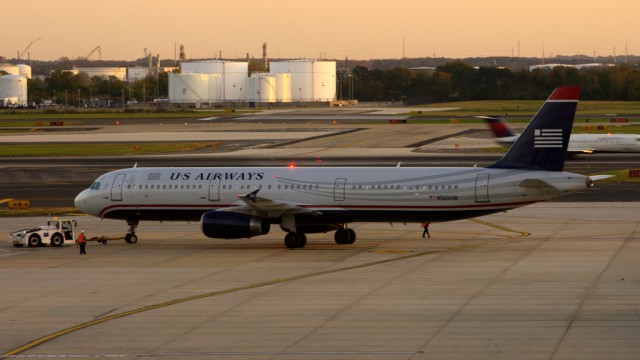
An Airbus A321 pushing back at Philadelphia. Is this a Boeing 757 replacement? – Photo: Mal Muir | AirlineReporter.com
With most Boeing 757s heading toward the end of their life cycles, airlines are moving forward with plans for more fuel-efficient aircraft that can hold similar amounts of passengers over a decent range. The most popular option at the moment is the Airbus A321. Having never flown one myself, I was excited to have an opportunity to test out this aircraft on a recent flight out east. I wanted to see first hand how the newer A321 stacked up to the (soon-to-be) classic 757.
At the moment, the only current operatosr of the A321 in the U.S. are Spirit and US Airways; however JetBlue and American Airlines have received their first ones and Delta, and Hawaiian have plans to expand their fleet with the A321 in either CEO (Current Engine Option) or NEO (New Engine Option) flavor. In some cases, these aircraft will replace 757s, such as with AA; however, some are just for expansion as with the case of JetBlue & Hawaiian.
My first-ever flight on an Airbus A321 was with US Airways, travelling from Phoenix to Washington DC’s Reagan National Airport. Not only would this be a new aircraft for me, but also a new airport (Phoenix) and a new airline (US Airways). Hee-haw, I was down for the AvGeek newness tri-fecta.
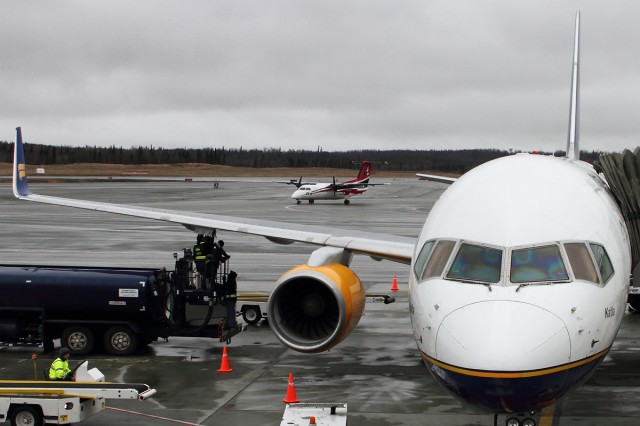
Icelandair Boeing 757 (named Katia – reg TF-FIV) in Anchorage. Photo by Brandon Farris.
Who wants to fly from cold to not as cold? Now you easily can with Icelandair starting service from Anchorage to Iceland. Well, most passengers do not stop in Iceland, but continue with Icelandair to Europe. I had the opportunity to check out the inaugural flight celebrations recently on the ground in Anchorage.
An excitement filled the air when I walked through the doors at Ted Stevens Anchorage International Airport (ANC) as a new day was beginning with new service launching to Keflavik International Airport (KEF) with Icelandair. Anchorage has become the eighth US destination for Icelandair.
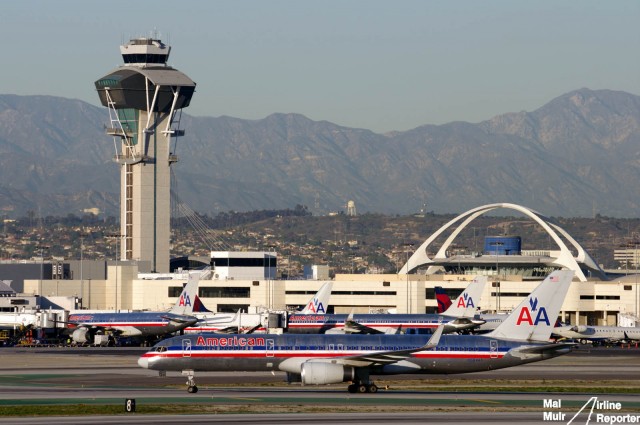
An American Airlines 757-200 at Los Angeles, a sight that can’t last forever – Photo: Mal Muir / AirlineReporter.com
If you fly long-haul in North America you have probably flown on a narrow bodied aircraft. Whether it be transcontinental flights between the coasts or flying transatlantic between the USA and Europe, the North American airlines just love to use these smaller, more efficient aircraft. For me, the daddy of these aircraft is the Boeing 757, which is no longer in production but still is the stalwart of the narrow bodies.
Flying with Delta, United, US Airways and American Airlines you will more than likely step onto a 757-200 or the super long 757-300 for a flight to Hawaii, New York or even London. But what happens when this aircraft goes out of service? What is there to replace it? As the 757s start to be retired from service due to age (US Airways is already doing this), the airlines are going to have to start replacing these aircraft with something… but what?
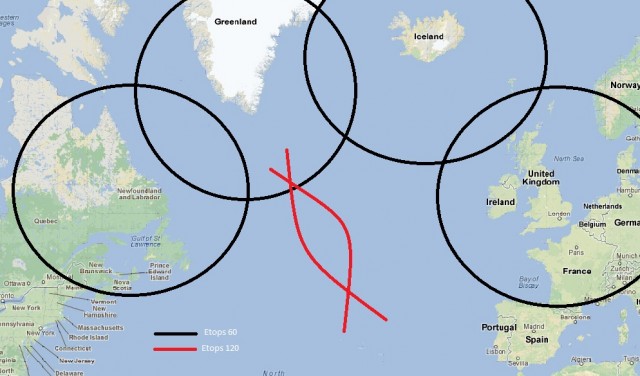
A Rough Chart showing Etops 60 vs Etops 120 between New York and London
You need to look first at what makes these aircraft so popular: the passenger to range ratio. The 757 has that unique mix of enough passengers on-board with the range to get it over an ocean or across a large continent without a hassle, while still maintaining reasonable fuel burn costs. The narrow body set up (single aisle) allows the flight to serve routes, and especially cities, which would not be able to handle the wide body (generally double aisle) aircraft such as the Boeing 767, Boeing 777 or Airbus A330.
Historically if you were going to fly long-haul you needed four engines. Even as far back as the Boeing 707 or the Douglas DC 8, these aircraft were designed to fly those long haul routes with engines for backup, should one fail. Then along came aircraft like the Boeing 757, 767 and Airbus A300. They only had two engines, but were still able to cover long distances over water with only minor changes.
Although ETOPS (Extended Range Twin Engine Operations) has been around for quite some time it had always been restricted 60 minutes, then it was extended to 120 minutes. The 120 extension came in to help flights across the Atlantic to London.
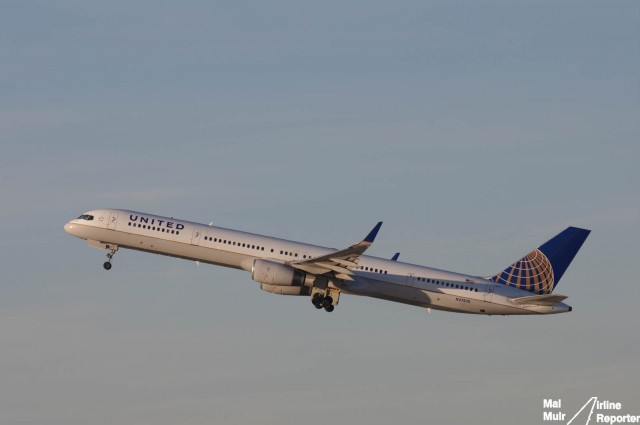
A United 757-300, the Aircraft that never ends – Photo: Mal Muir / AirlineReporter.com
At a 60 minute rating they would have to fly from New York to London over Iceland to ensure that there was a landing site in range within 60 minutes. With new engine & navigation technology, came the introduction of 120 rating (though 180 minute etops is now the standard). It meant you could go direct over the ocean without a worry, as half way across you would still be within 2 hours of Iceland or New York or London. This revolutionized air travel.
As technology progressed more, the ETOPS ratings extended out, with Boeing currently holding a 330 minute rating for the 777 & 787 aircraft. Airbus is expecting a 350 minute rating for the new A350 XWB.
Today, narrow body aircraft serve plenty of ETOPS routes. Alaska Airlines operates the Boeing 737-800 & 900 from the west coast to Hawaii and there are quite a few rumors that Southwest might join them with their 737-800’s as well.
The A320 family though does some interesting ETOPS flights as well. The Airbus A318, also known as the Baby Bus, flies across the Atlantic with British Airways and Air Canada Air Canada flies an A319; a long way to go on such a small aircraft. When you have long thin routes (long distance, small amount of passengers) you need to use an appropriate aircraft.
But which aircraft will most likely fill the gap that the 757 will leave? Boeing has the 737-900ER and variants of the new 737 Max as well. Airbus is offering the A321 and soon the A321neo.
The A320neo family should extend the range of this aircraft by a good 600 miles. This could be the difference of serving a route or not and combines the capacity of the original A321, with the range of an A319 (the aircraft in the Airbus narrow body family with the longest range).
American Airlines has selected the A321 to replace its aging 757-200s and 767-200s on its transcontinental routes. Hawaiian Airlines just ordered the A321neo to expand its ETOPS operations. Flights from Honolulu to Los Angeles for instance are in the range of an A321neo and by utilizing this aircraft, they can free up some of their A330s or 767s to serve other, longer routes or routes that need the higher capacity. The A321neo will allow them to expand to possible new markets that do not have the demand for the larger A330 or 767.
Other airlines, like Icelandair, which currently only operates a fleet of Boeing 757s, are planning to expand their operations by introducing 12 737 MAX 8 and 9 aircraft. United Airlines, which currently has over 150 757s has ordered 100 737 MAX aircraft, which many will be used to replace the aging 757s.
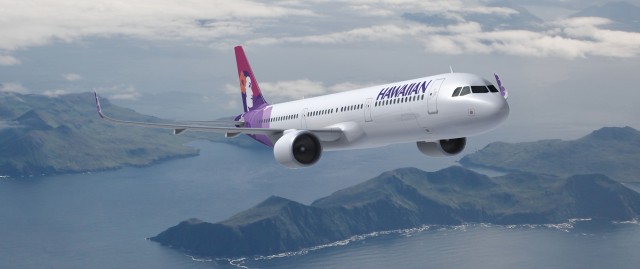
Mock up of what Hawaiian Airlines Airbus A321NEO will look like. Aircraft image from Airbus, edited by Brandon Farris.
The new Airbus A321neo and 737 9 MAX will change the narrow body long range family, as it takes over those routes the 757 currently serves. This will also put more 757s on the market and possibly low cost carriers like Allegiant Air, might be able to add more 757s to their fleet and expand their ETOPs flights.
These aircraft and other new ones like it should replace those venerable 757s flying the sky at the moment. It will be good for those flying on-board, as new aircraft means a better on-board experience, but for some like me, it will be a sad day to see fewer 757s take flight. Seeing that ungainly long body of the 757-300, which looks like it shouldn’t exist on such a thin aircraft, is an amazing sight. When you step on-board, the single aisle looks like it will never end. Hopefully these new aircraft can inspire similar thoughts amongst future generations of AvGeeks.
 |
This story written by…Malcolm Muir, Lead Correspondent. Mal is an Australian Avgeek now living and working in Seattle. With a passion for aircraft photography, traveling and the fun that combining the two can bring. Insights into the aviation world with a bit of a perspective thanks to working in the travel industry.@BigMalX | BigMal’s World | Photos |
![ICE_737_MAX_8_9_vw035-2UP_PR-1112[1] Boeing illustration showing what the Boeing 737 MAX will look like with Icelandair livery.](https://www.airlinereporter.com/wp-content/uploads/2012/12/ICE_737_MAX_8_9_vw035-2UP_PR-111213-640x262.jpg)
Boeing illustration showing what the Boeing 737 MAX will look like with Icelandair livery.
“This commitment is the result of our research into what aircraft manufacturers have on offer to help us strengthen and grow our fleet and our network towards the future,” said Bjorgolfur Johannsson, Icelandair Group president and CEO. “We have had a successful relationship with Boeing for decades and we are pleased to continue our cooperation for years to come.”
It appears that the airline will not be replacing their 757 fleet (although some of the older 757s will likely be rotated out of service) with the 737 MAX, but supplementing it.
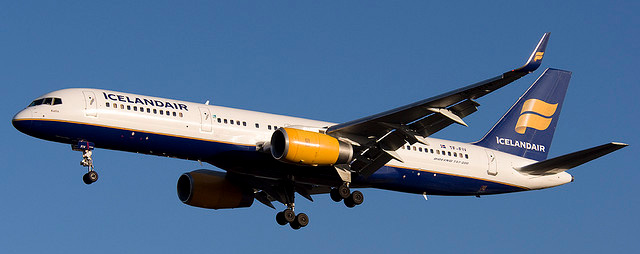
Icelandair currently only operates the Boeing 757. Image by: Daniel Jones / djlpbb40.
“Over the past decades, Icelandair has successfully utilized its all-Boeing 757 fleet to establish its Reykjavik-based hub as an important gateway between Europe and North America,” said Todd Nelp, vice president of European Sales, Boeing Commercial Airplanes. “The introduction of the 737 MAX to Icelandair’s operation will complement its existing 757 fleet and ensure the carrier’s continued expansion across both continents, offering significant fuel saving with unrivaled passenger comfort.”
The Icelandair livery has always looked quite impressive on the Boeing 757 and I feel almost equally so on the MAX. One has to love those yellow nacelles.
 |
This story written by…
David Parker Brown, Editor & Founder. David started AirlineReporter.com in the summer of 2008, but has had a passion for aviation since he was a kid. Born and raised in the Seattle area (where he is currently based) has surely had an influence and he couldn’t imagine living anywhere else in the world.
@AirlineReporter | Flickr | YouTube |
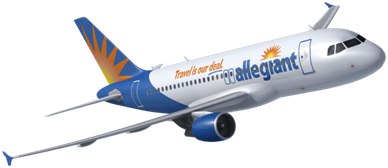
What Allegiant’s Airbus A319s will look like. Image from Allegiant.
Today, Allegiant Air has announced that they plan to add 19 Airbus A319s into their fleet.
Allegiant will lease nine A319’s from GE Capital Aviation Services (GECAS) and also lease 10 A319s from Cebu Pacific Air. The first two A319s are expected to start service during the second quarter of 2013.
The aircraft, which will be configured with 156 economy class seats, will not be new and aged seven to ten years old at the time of delivery.
Can Allegiant’s success of a one model fleet, still exist with a fleet of three different aircraft types? Traditionally, Allegiant only flew MD-80 aircraft and more recently added the 757-200. Now, with a third aircraft type, that greatly increases training and maintenance costs. In a presentation given today, Allegiant stated that, “Pilot transition/training -less efficient, but manageable,” and that “Economics dictate this added complexity is worthwhile.”
“The A319 is a new aircraft type for Allegiant, but we otherwise see this as a continuation of our existing business model,” said Andrew C. Levy, Allegiant President. “A319 asset values have significantly declined and now mirror the environment we saw when we first began buying MD-80s.”
Allegiant is hoping to place the A319s on routes that are just marginally profitable for the MD-80 aircraft. The A319 is 25% cheaper per block hour with fuel and 40% lower on maintenance than the MD-80 aircraft. Also, the range of the A319 is greater with a 3,600 nm vs just 1400 nm, allowing Allegiant to look at longer route opportunities. At this time, the airline is not planning on increasing fleet utilization.
The airline is planning to retire two MD-80s, which have heavy maintenance checks coming up, but do not have future retirement plans at this time. By 2015, Allegiant is planning to be operating 56 MD-80s (58 now), six Boeing 757s (four now) and 19 Airbus A319s (0 now).
Buying the A319 is not a fleeting changing plan, but a fleet growth plan. There is no question that Allegiant got a great deal on the A319, since multiple airlines are dumping that smaller model for larger A320 and A321 aircraft. Soon, there will be more A320CEOs in the market, as airlines upgrade to the A320NEO family.
I would not be surprised to see additional A320 family of aircraft join Allegiant’s fleet before 2015. There will be a lot of change with the airline in the next coming years that will test their ability to succeed. I have a feeling that with the demand for rock bottom airfares increasing, they might be able to pull this off.







![ICE_737_MAX_8_9_vw035-2UP_PR-1112[1] Boeing illustration showing what the Boeing 737 MAX will look like with Icelandair livery.](https://www.airlinereporter.com/wp-content/uploads/2012/12/ICE_737_MAX_8_9_vw035-2UP_PR-111213-640x262.jpg)


